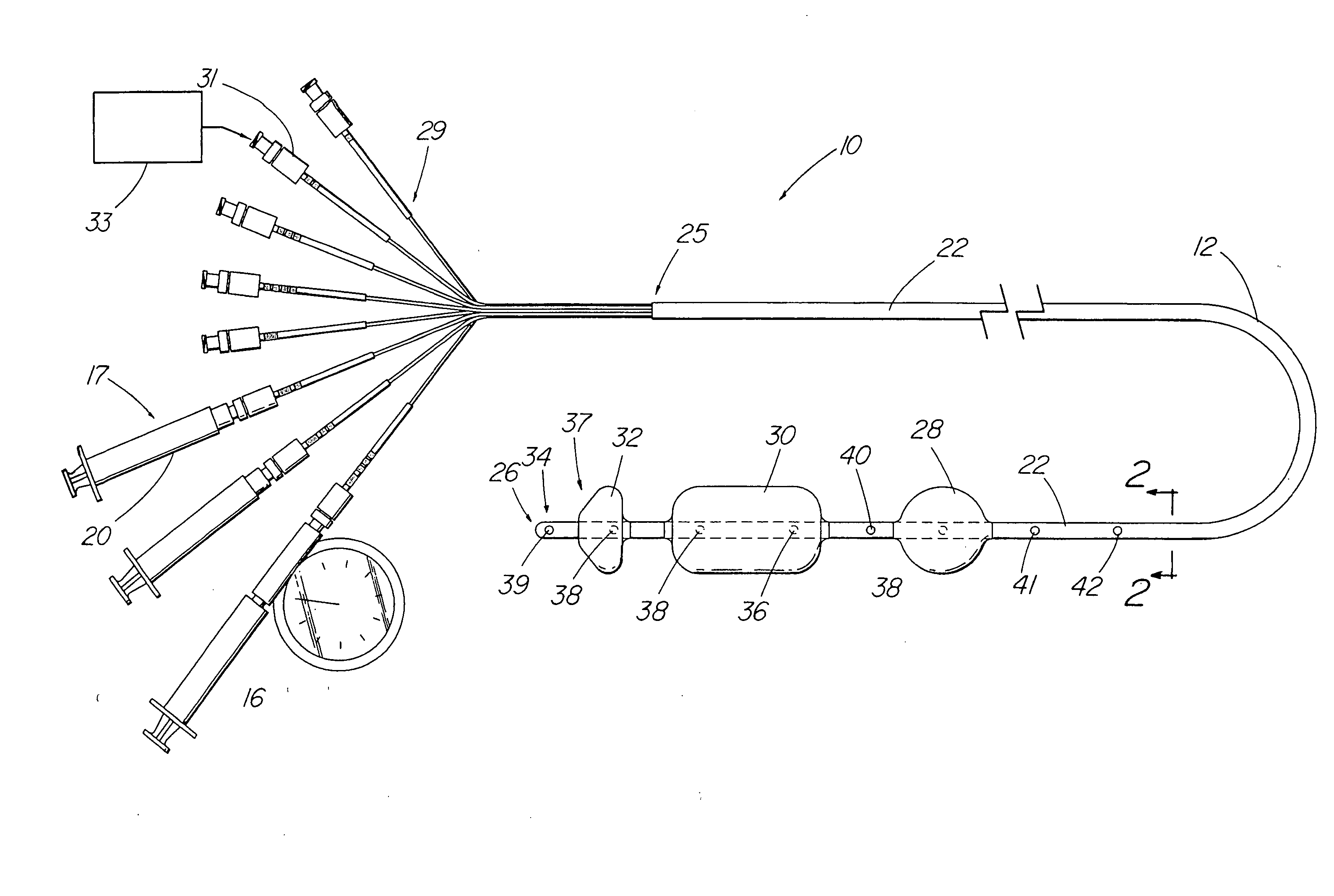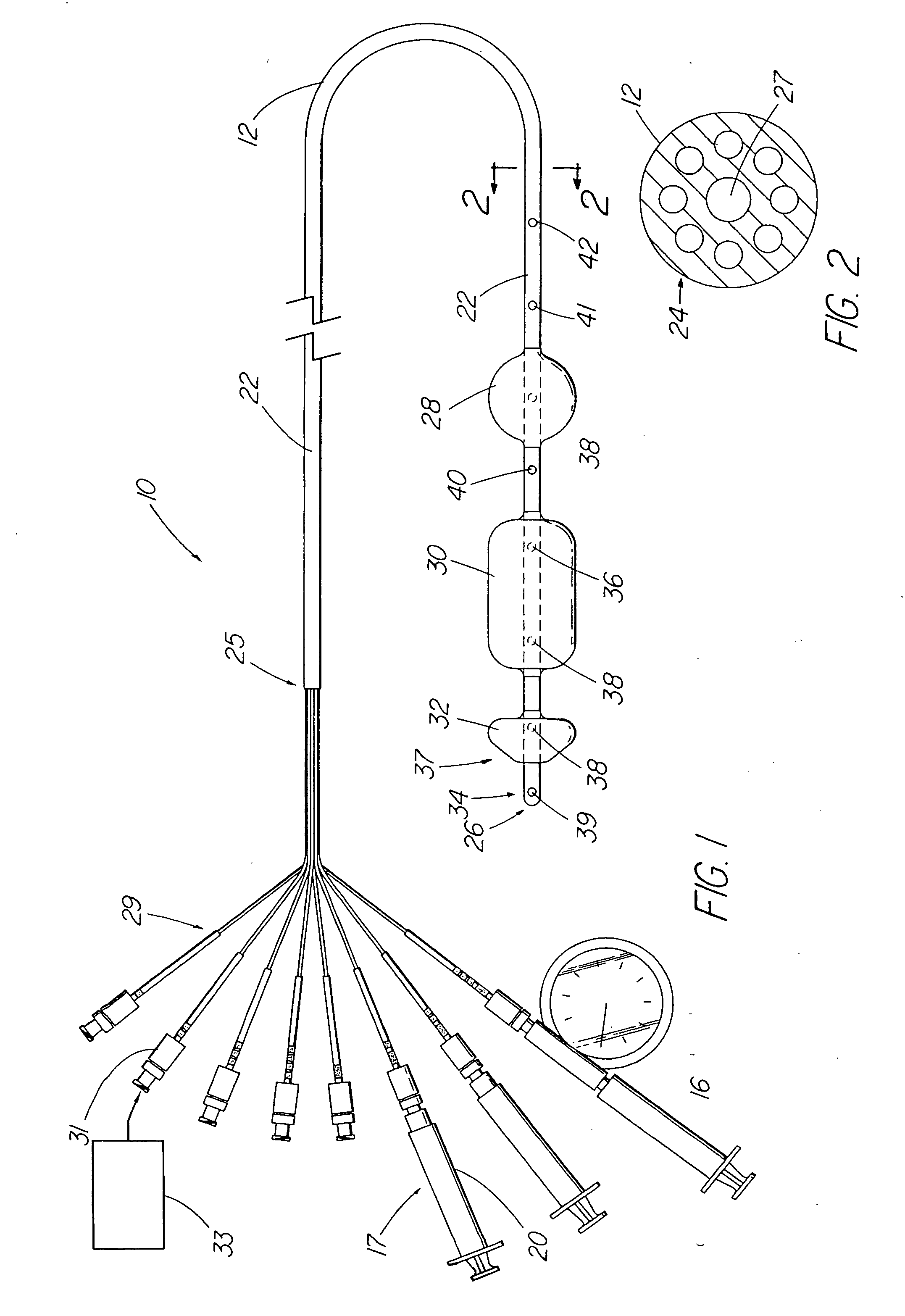Method for measuring esophageal sphincter compliance
a technology of esophageal sphincter and compliance, which is applied in the field of medical devices, can solve the problems of insufficient simple measurement of les pressure, and achieve the effect of removing muscle tension and ton
- Summary
- Abstract
- Description
- Claims
- Application Information
AI Technical Summary
Benefits of technology
Problems solved by technology
Method used
Image
Examples
Embodiment Construction
[0024] Referring to the drawings in detail, the LES compliance measurement apparatus of the present invention is referred to generally by numeral 10. A series of embodiments of the apparatus 10 are illustrated in FIGS. 1-6 which includes a sphincter compliance measurement catheter 12, such as a compliance balloon catheter, that comprises a length of tubing 22 having a first or distal end 26 and a second or proximal end 25. Disposed along the length of tubing 22 are a first extendable member 28, such as an inflatable balloon, with the first extendable member 28 being configured to expand and contact the walls of the esophagus, and a second extendable member 30, such as a non-elastic balloon or bag, that is placed in an intrasphincteric position for measuring the compliance of the LES. While the extendable members 28,30 of the illustrative embodiments are depicted as inflatable balloons, one skilled the art could appreciate that other expanding members, such as baskets or similar stru...
PUM
 Login to View More
Login to View More Abstract
Description
Claims
Application Information
 Login to View More
Login to View More - R&D
- Intellectual Property
- Life Sciences
- Materials
- Tech Scout
- Unparalleled Data Quality
- Higher Quality Content
- 60% Fewer Hallucinations
Browse by: Latest US Patents, China's latest patents, Technical Efficacy Thesaurus, Application Domain, Technology Topic, Popular Technical Reports.
© 2025 PatSnap. All rights reserved.Legal|Privacy policy|Modern Slavery Act Transparency Statement|Sitemap|About US| Contact US: help@patsnap.com



